Beijing, the 22 million strong capital of Cathay, was my next destination. We danced in Harbin's Stalin Park, slid giant ice sculptures, and celebrated J and Davide's marriage. Beijing offered further immersion into Chinese culture. Both the ancient and the ultra-modern ones.
Rude Air China staff at the Harbin check-in counter
Yet, the flight didn't start smoothly. In my post about technology and the Internet, I described major issues with China Eastern airline. The Harbin to Beijing leg was done with Air China and the incident actually happened before boarding.
We queued in a line to check in the bags. Usually, it's a one common line and then passengers can approach any available counter. That wasn't the case here. Each counter had a separate queue. The counter we were waiting for, had printing issues. Surprisingly, the rep, instead of directing passengers to the other lines, was entirely ignoring everyone. Moreover, the other reps were overlooking their colleague, causing a stir.
Only after I and another Chinese passenger grabbed our baggages from the conveyor belt, and rushed to the next rep, they seemed to notice. The staff was rude. Didn't apologize. And didn't make any effort to address it properly. Especially, knowing that their handling affected the passengers being on time for boarding. Such a bad customer service.
Private transfer to Mutianyu Great Wall
Before arriving in China, we planned a packed itinerary. Visiting the renowned Great Wall was a must. Therefore, we opted for a location that was closest to the Beijing Capital International Airport. The Mutianyu was the best choice, only about a 90-min car ride.
Hiring a professional driver was the best decision. He knew how to drive on busy Beijing roads. Moreover, the car had plenty of space in the back seats. It was comfy enough to nap and relax. Once we arrived, the driver even helped us find the shuttle bus – the last leg between the parking and the ascent to the wall.
Ascending the Mutianyu Great Wall
This place reminded me of medieval defense structures in Europe. But this wall was massive! It took me a minute to climb centuries old coble stone stairs. Once on top, the view struck me. It was truly a never-ending line, up to the horizon.
The architecture was crude. Dark uneven stone blocks with rough edges displayed its former militaristic purpose. The narrow corridors within towers forced tourists to queue and pass just one person at a time. In contrast, the Mutianyu Great Wall faced spectacular lush green hill landscape. And that moved me even more.
As China is known for its rapid industrialization, the Mutianyu Great Wall was a visual representation of that. The ascending side had welcoming modern infrastructure. Full of food stalls, souvenir shops and photo ops. Facing North on top of the wall, I could imagine the old China. With the endless natural landscape that didn't change much since the Qin dynasty.
Even with the crowds wandering around, the Great Wall is truly impressive. A historical barrier between the orderly culture and the wild unknown. And since I highly enjoy hiking, I hope to return one day to explore those trails.
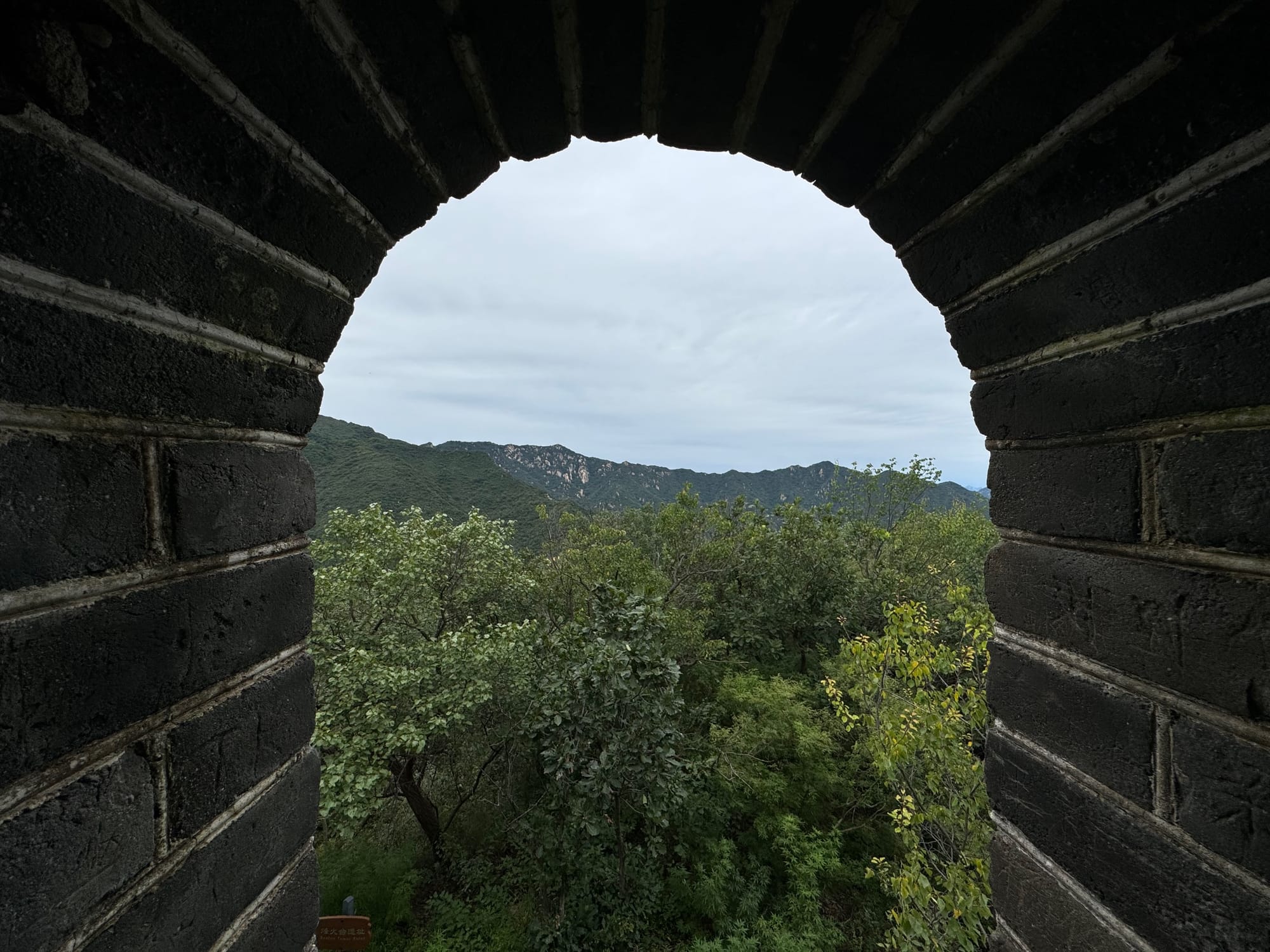
Klook scam with the Mutianyu Great Wall Cable Car
Anticipating crowds, we booked the “Mutianyu Great Wall & Cable Car Ticket ( ID Card direct enter)” on Klook. Assuming that's all we needed to visit this popular attraction. Indeed, Klook QR code worked to hop on the shuttle bus. Next, we queued for 45 minutes, only to be rejected at the next QR scanner. Our fault, that we joined a chair lift queue, instead of the cable car queue.
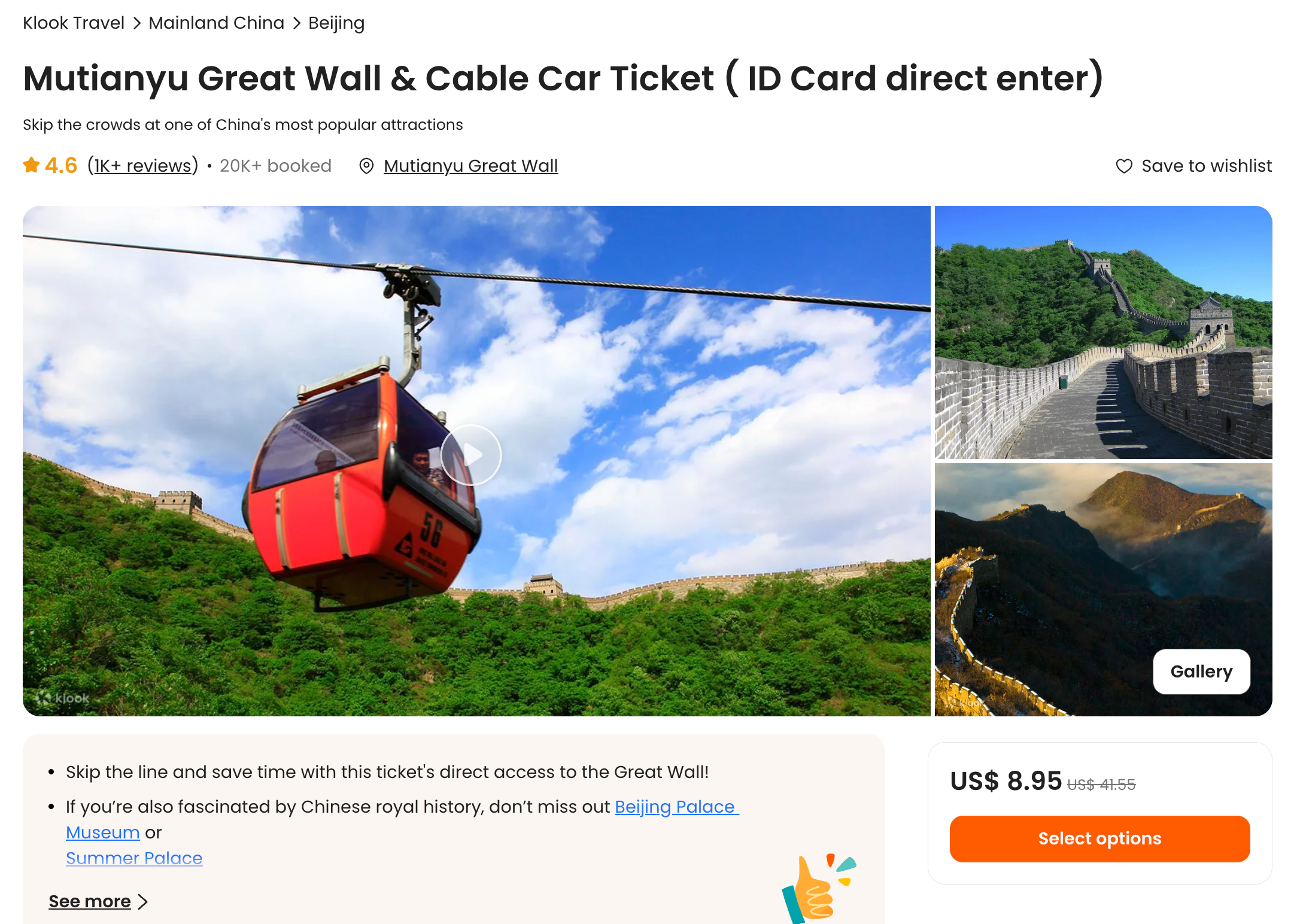
The Klook ticket clearly said, “Cable Car” and has a corresponding image. So we rushed to the next entrance. Luckily, this time no queue, but the gate wouldn't budge. It turned out that the QR was invalid. So we were forced to buy tickets on the spot. But how could that be when what bought was literally named “Mutianyu Great Wall & Cable Car Ticket ( ID Card direct enter)”?
Thanks to my tour leading experience, I knew how to document and explain the case to Klook customer support. After a lot of there and back, it turned out that the name of the product we bought was incorrect. The “Cable Car” is in the title, but only after completed transaction we could see the hidden: “what's included” section. As of this writing, the confusing offer is still available on their site.
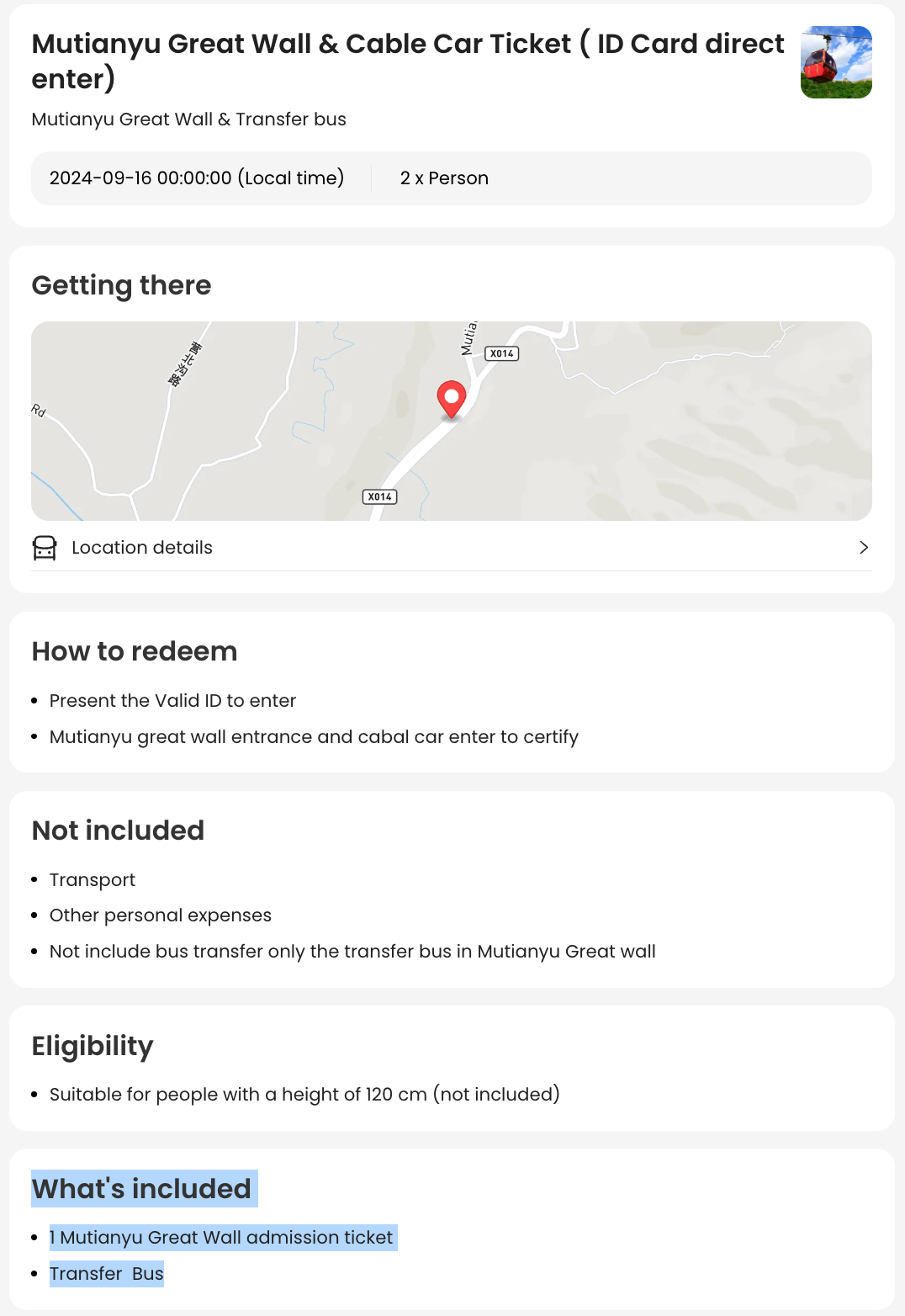
Eventually, we did receive a 30% refund in form of credits (Klook Cash). But the bad aftertaste remained. Since then, I have limited trust for Klook as a platform.
Shopping at Beijing Apple Store and retail district
The mishaps at the Mutianyu Great Wall extended our original half-day driver booking. However, I knew that visiting such a gem requires a time buffer. So beforehand, I arranged driver availability and confirmed the overtime rate. Satisfied, we hopped into the comfy back seats and headed to the hotel.
After getting refreshed, we went to the retail district called Sanlitun Village South. The full moon with night lights were vividly illuminating a busy complex of shops and restaurants. It felt like being teleported. A moment ago, we were next to lush green hills. Now, we were wandering a futuristic plaza. The bright colors of big brands were attracting onlookers.
One of them was the Apple Store Sanlitun. It lured me in, as I was curious to play with then new iPhone 16 Pro. Even though, it's assembled in China, the local stores don't display the new iPhone earlier than the rest of the world. Nevertheless, the Apple Store itself was neat and ambient. No wonder that Chinese brands like Xiaomi or DJI are following the same design principles in their stores.
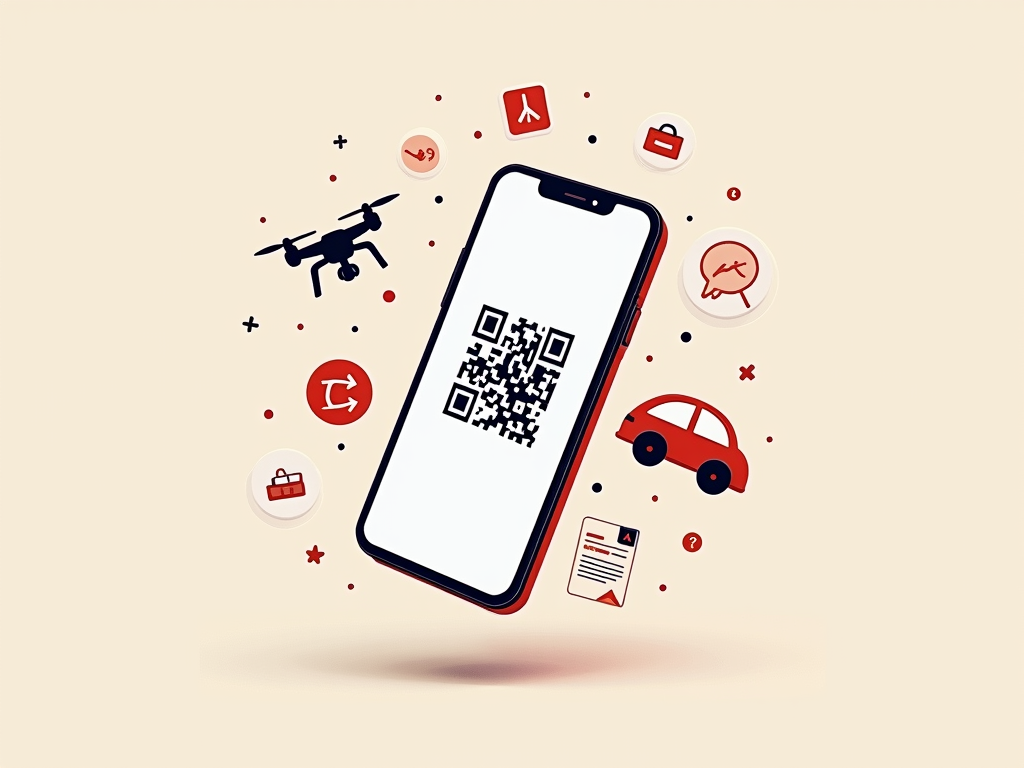
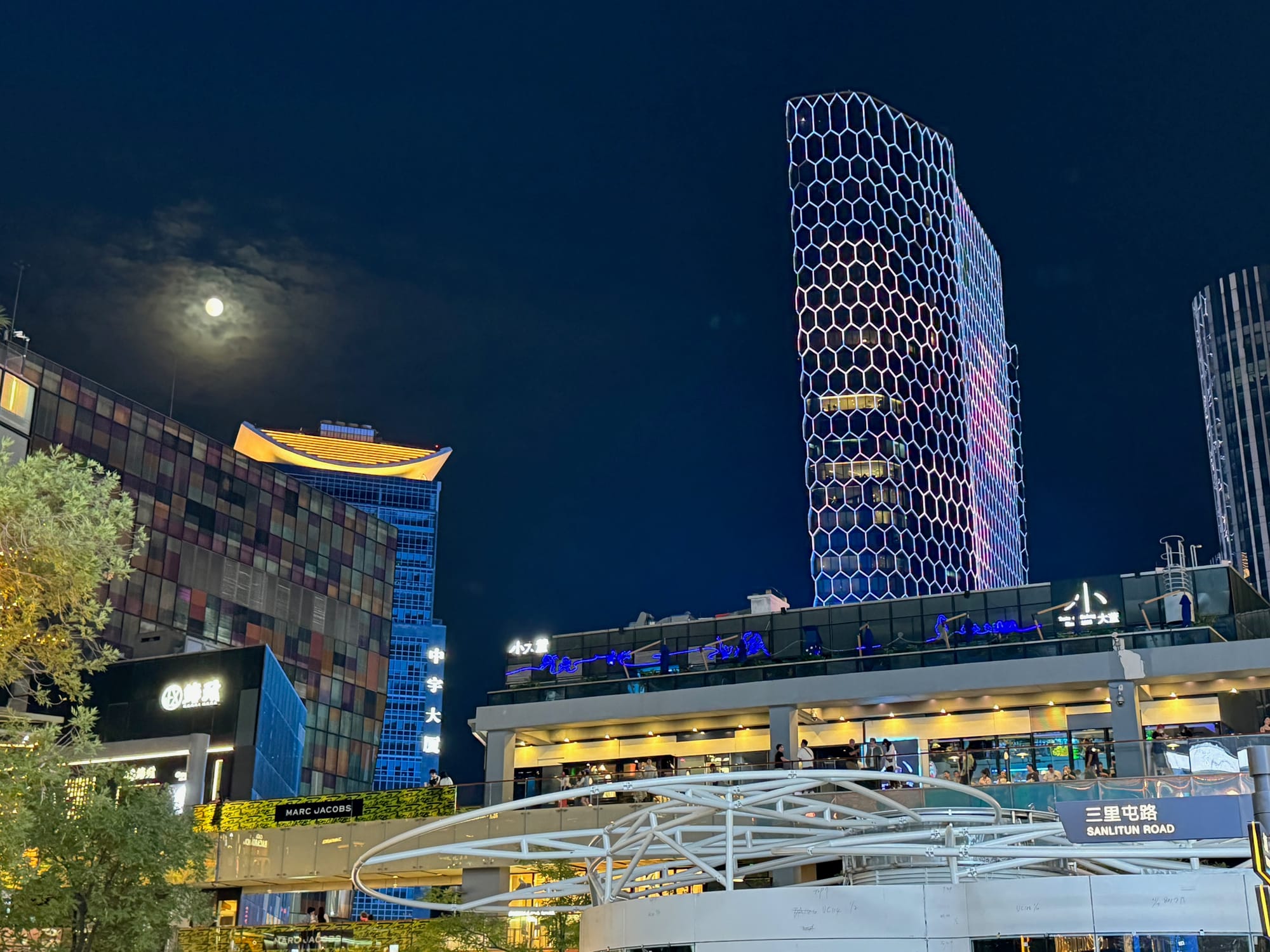
Kung fu kicks at Universal Studios Beijing
It was time for thrills! As massive rollercoasters fans, we visited Universal Studios theme park. Arriving before the opening was a wise choice. That day was a Mooncake Festival, a holiday in Beijing, and we were expecting big crowds. Once the gates opened, we moved straight to the Transformers Decepticoaster.
The staff was extremely diligent in checking if you're not bringing any devices. Rightfully so. That was the most hardcore rollercoaster in the whole park. Speeds up to 64 km/h (ca. 40 mph), with zero-G roll, and 32 m (105-foot) drop. We loved it so much, that we returned to it twice!
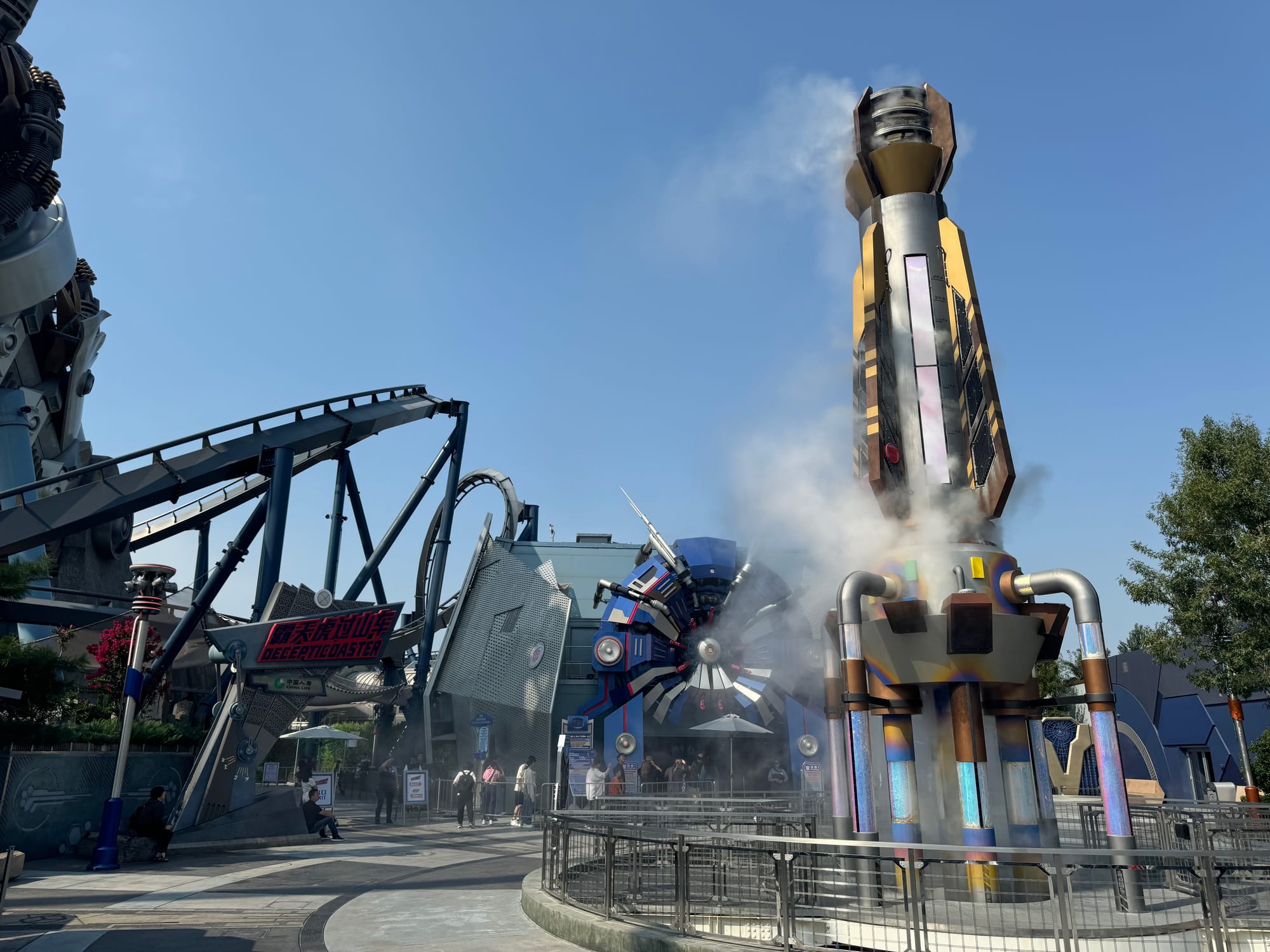
Kung Fu Panda was another fabulous section. Located in an enormous hangar, recreating the charm of a traditional yet fictional village. It's a full circle. An American animation about a giant panda, the national symbol of China, has a theme park attraction in the city of Beijing. It's an idealized Chinese rural village with ambient lampions, wooden bridges, and nature-like details. All to recreate the vibe of the Yellow Mountains, that first inspired the Kung Fu Panda creators.
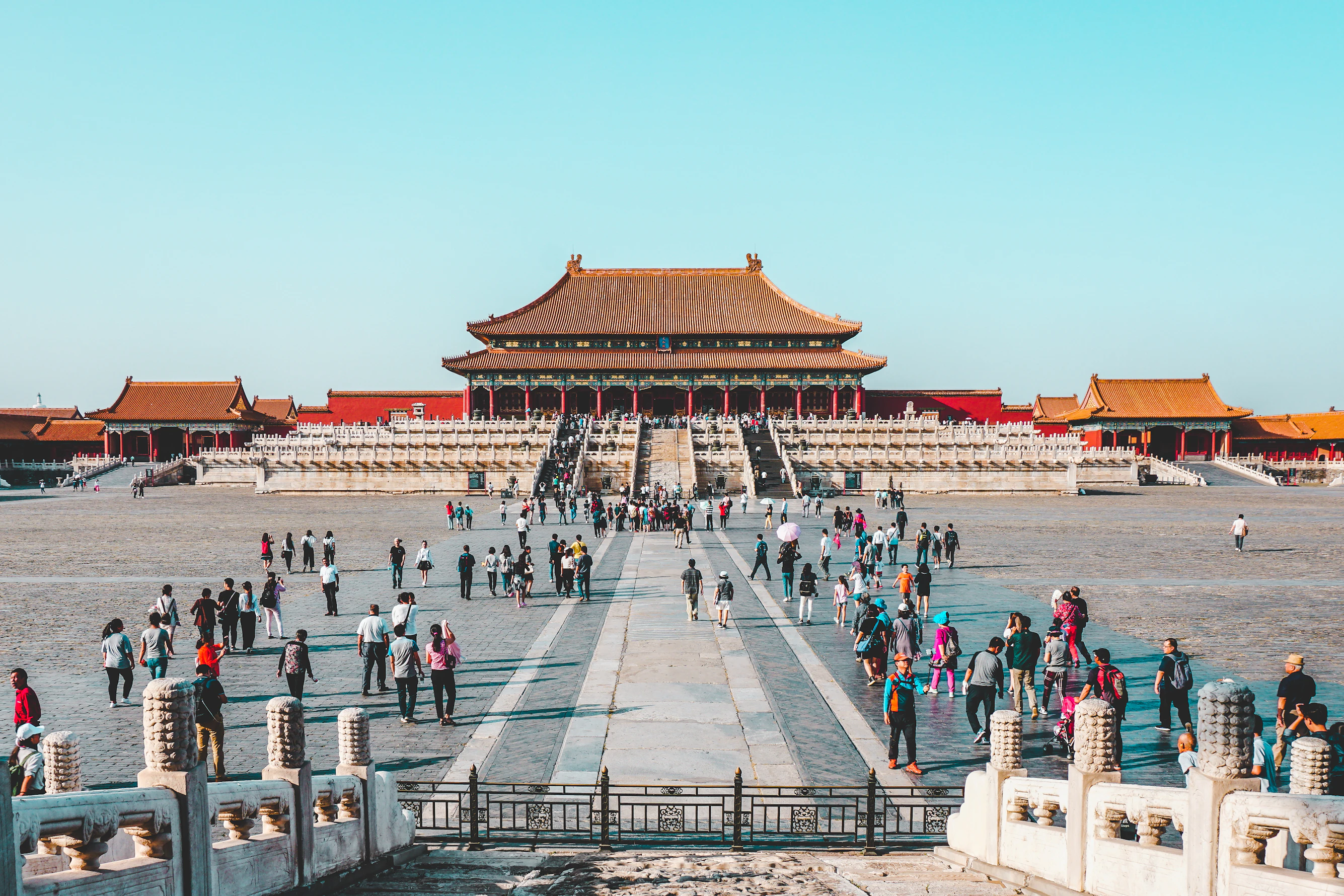

Lastly, Universal Studios Beijing featured an extensive Harry Potter theme land. Where we:
- Flew in the corridors of Hogwarts as part of the “Forbidden Journey”.
- Listen to the a cappella singing Frog Choir.
- Enjoyed the theatrical performance of wand expert at Ollivanders.
Crucially, while most park rides' narration is conducted in Chinese, the interactive parts are bilingual. Which makes Universal Studios Beijing accessible for both the locals and the internationals.
Overall, we had a blast! When you come here, just remember to skip the terrible official mobile app, and buy the tickets via Klook.
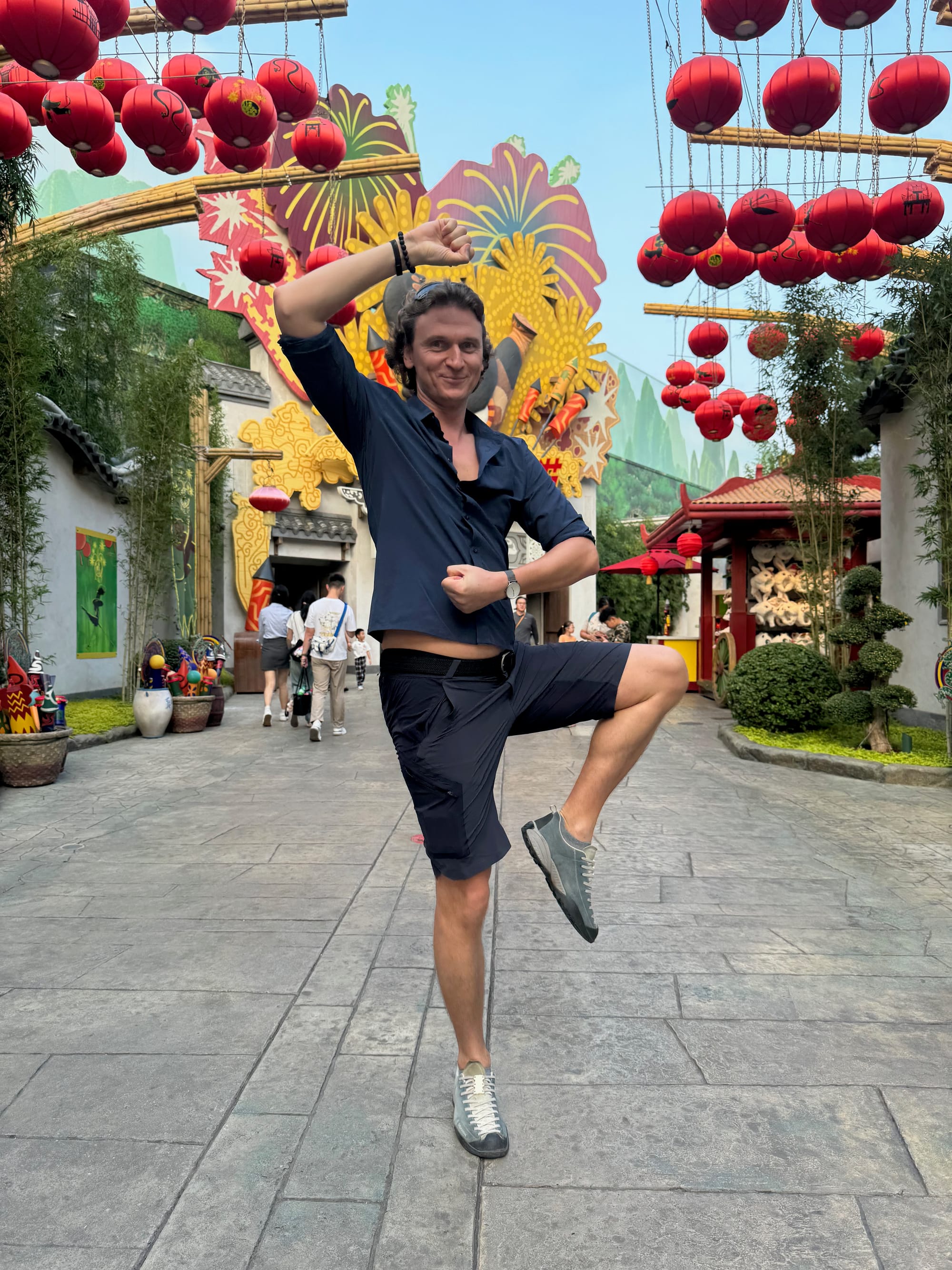
Being like Jet Li in the Forbidden City
On our last day, we entered the most expensive real estate in the world. Or at least that's one of the travel guide taglines for the Forbidden City. Once again, I felt like stepping into a time machine. This complex bear witness China's dramatic changes. From imperial dominance, to the Cultural Revolution, and the modern state. It's truly remarkable that these architectural masterpieces still stand despite subsequent turbulence of colonialism, communism, and capitalism.
Similarly to gothic cathedrals in Europe, the palaces' size were overwhelming. We started at the Meridian Gate, through the Gate of Supreme Harmony, and up to the biggest Hall of Supreme Harmony. I imagined that everyone in the past would be intimidated by this grandeur. Such impossible size would legitimize the divine role of the emperors.
Even though I experienced the vastness of other enormous structures, like St. Peter's square in the Vatican, the distances here were unattainable. Literally distancing the emperor from everyone else. Walking those strides reminded me of “Hero” with Jet Li. The movie pictured the emperor as an inapproachable figure. Jet Li's character needed to complete seemingly impossible assassination contracts to get closer. With each completed challenge, he was granted more privileged access to the ruler. Jet Li traversed this vast distance, to finally approach the emperor one on one.

I felt the same satisfaction, after crossing all the gates to eventually reach the historical imperial chambers, and the gardens behind them.
Cultural preservation of Chinese heritage
Diversity, uniqueness, and richness of each culture inspires me to roam the globe. Indeed, I was mesmerized by the scale of Mutianyu Great Wall and the vastness of the Forbidden City.
Alas, the preservation quality is not stellar. Many sections are dusty, poorly lit, and in decay. Therefore, I'd love to see the Chinese preserve their heritage, like the Japanese do. During my many visits to Japan, I noticed that besides ultra-modern skyscrapers, locals know how to take extra care of their old structures. In my view, the Chinese already know how to do the former, but not yet the latter.
Once the Chinese polish their palaces, then they will look like those in wuxia movies.
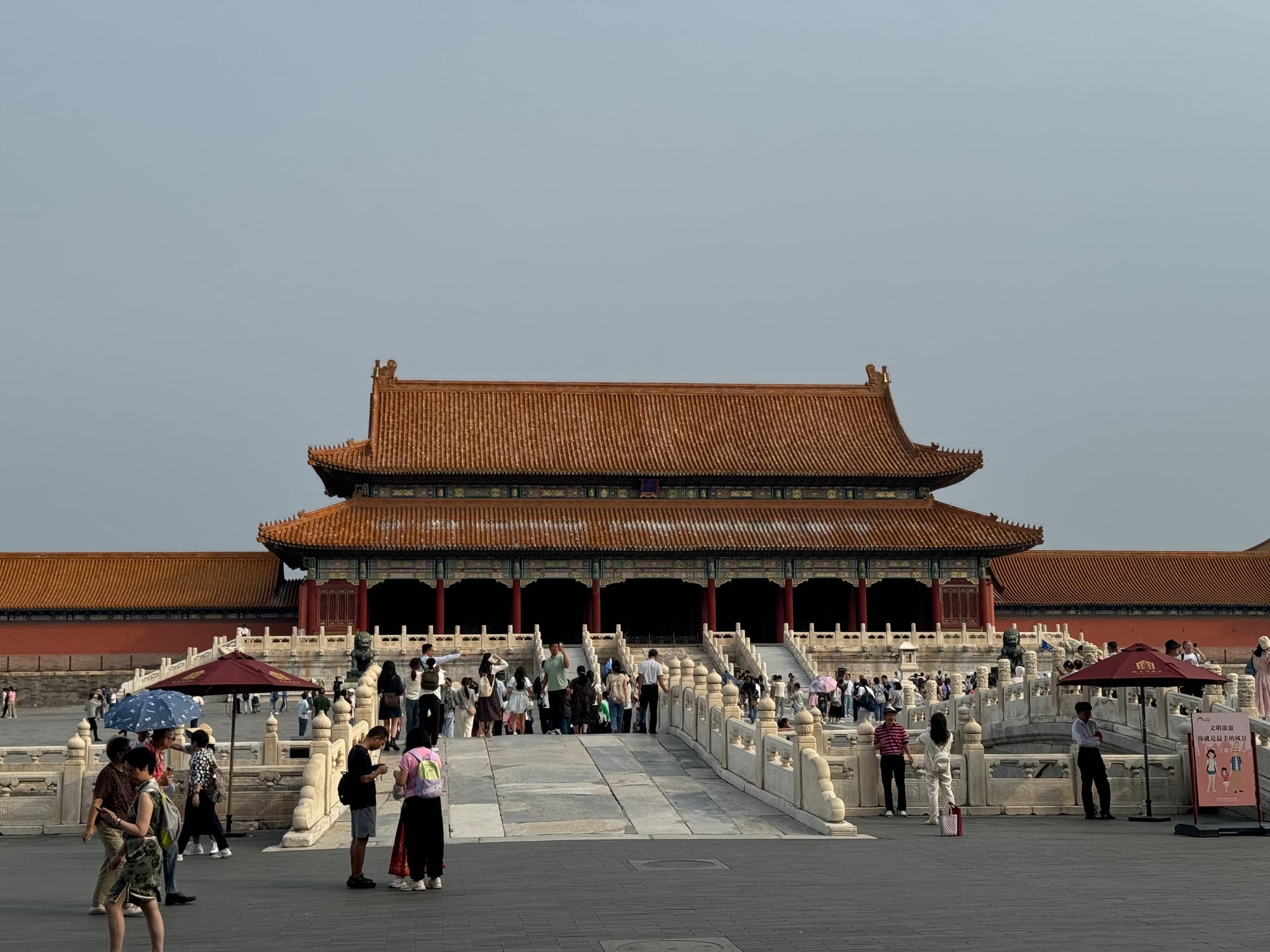
Sweet and sour China
As you can see, I have mixed fillings. There are so many great things about China, their culture, attractions, technology. Yet, the same elements can be the source of annoyance.
Of course, every country has it. Therefore, my story should serve as a preparation. The Great Wall, Universal Studios, and Forbidden City are highlights, undoubtedly. Local travel logistics are doable, but do double-check crucial details. Furthermore, having a time buffer allows you to cherish the whole travel experience in China.

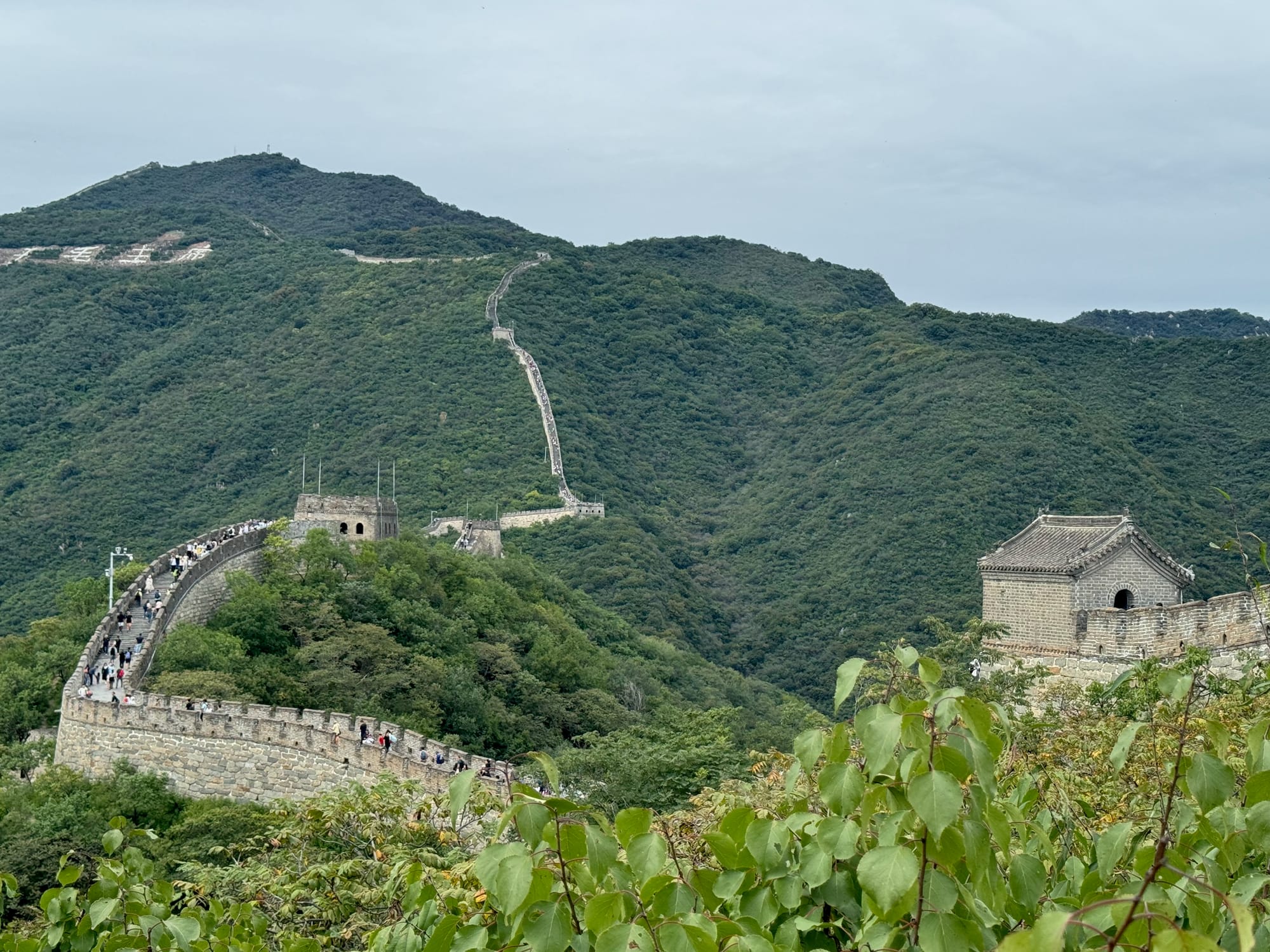


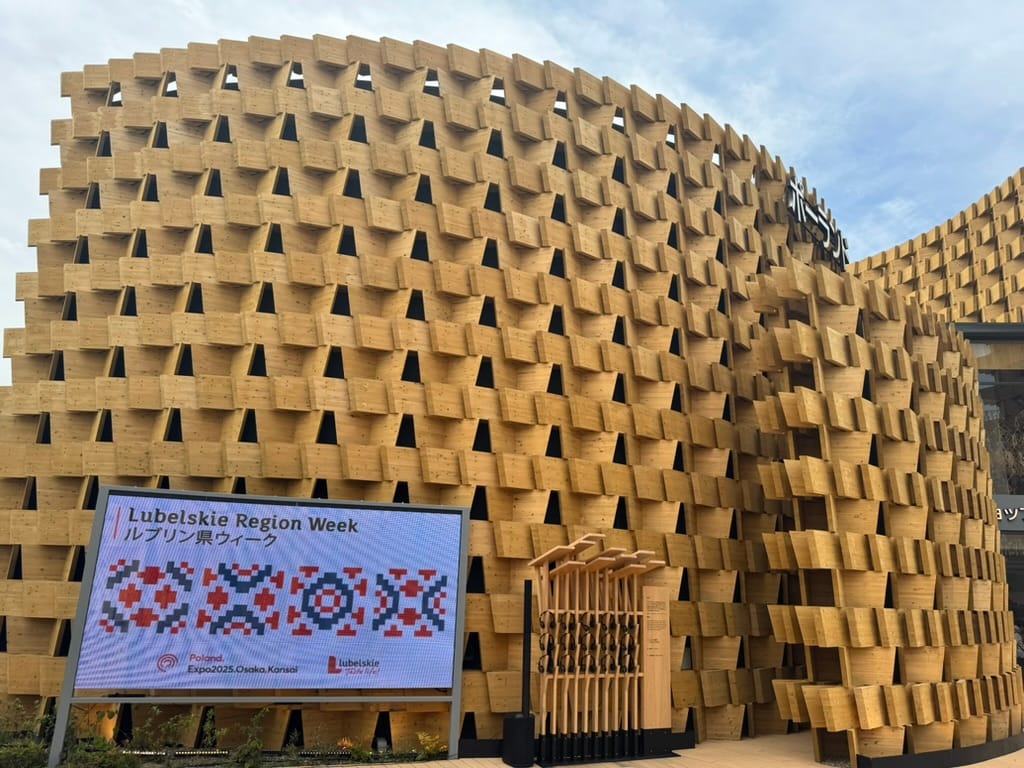
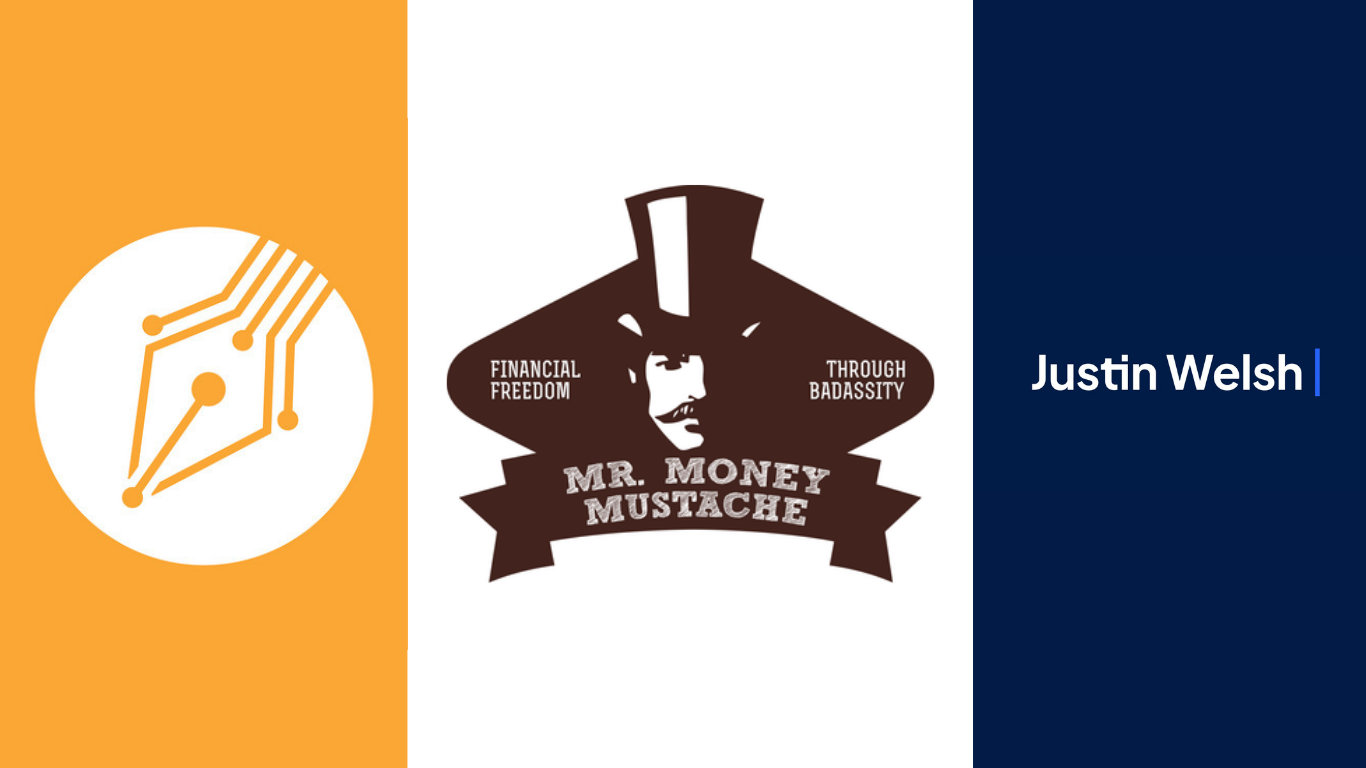


Discussion